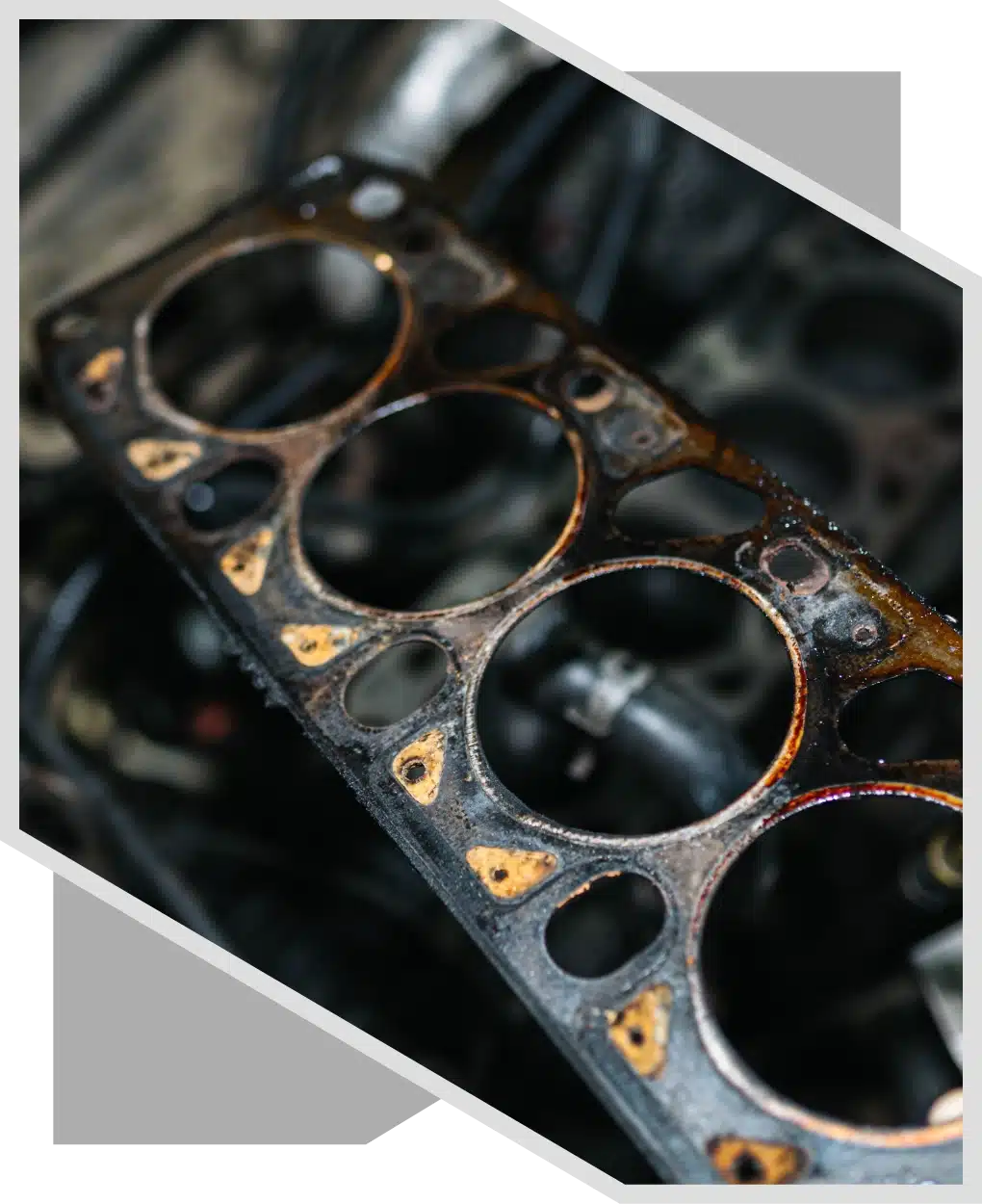
A vehicle’s head gasket rides between the block and the heads. The heads contain the valves that open and close to allow air and fuel into the chambers and exhaust out. The engine, including the heads, has water galleys that carry coolant through the engine to help keep it cool. A head gasket lines up with the water and oil ways, which allows the coolant and oil to pass from the block to the heads. It also keeps the engine’s compression in the cylinders. Because head gaskets undergo a lot of pressure, they must be strong. They are made of two to five layers of steel with a rubber-like coating that can withstand high temperatures and chemicals.

The earlier you can detect a head gasket repair issue, the more chance you have of preventing extensive engine damage. Some of the common signs of a broken head gasket include:
If the engine overheats, but you can’t find any coolant leaks, you may have a head gasket leaking. The coolant is leaking into the oil instead of onto the ground.
If you seem to be losing coolant but don’t see any leaks on the ground, you may have a head gasket problem. it is recommended to visit an expert auto repair shop near you as soon as possible.
If you notice white smoke coming from the exhaust, the head gasket may be broken by the exhaust valves, letting water out through the combustion chamber on the exhaust side.
If you suspect a head gasket and the oil isn’t milky, check the coolant reservoir or radiator. Do not open the radiator when the vehicle is hot. If your vehicle has a radiator cap in addition to the coolant reservoir, let it cool completely and remove the radiator cap. Start the vehicle and watch the coolant as the vehicle heats up. If you see bubbles, you most likely have a head gasket problem.
When you bring your vehicle into Eastside Automotive in South Carolina for head gasket repairs, our technicians will use diagnostic equipment to verify the problem before tearing the engine down. Once it’s torn down, we can check the heads and internal parts for additional damage, particularly the heads.
In most cases, the head gasket doesn’t cause additional engine damage if you catch the vehicle overheating and shut it off right away. Most damage happens when you don’t notice the overheating and continue driving.
Once we look at the heads, block deck, pistons, and valves, we:
When you need preventative maintenance or repairs, contact Eastside Automotive at (864) 801-0202 for an appointment. We are conveniently located at 2010 River Road, Greer SC 29650.
visibility_offDisable flashes
titleMark headings
settingsBackground Color
zoom_outZoom out
zoom_inZoom in
remove_circle_outlineDecrease font
add_circle_outlineIncrease font
spellcheckReadable font
brightness_highBright contrast
brightness_lowDark contrast
format_underlinedUnderline links
font_downloadMark links